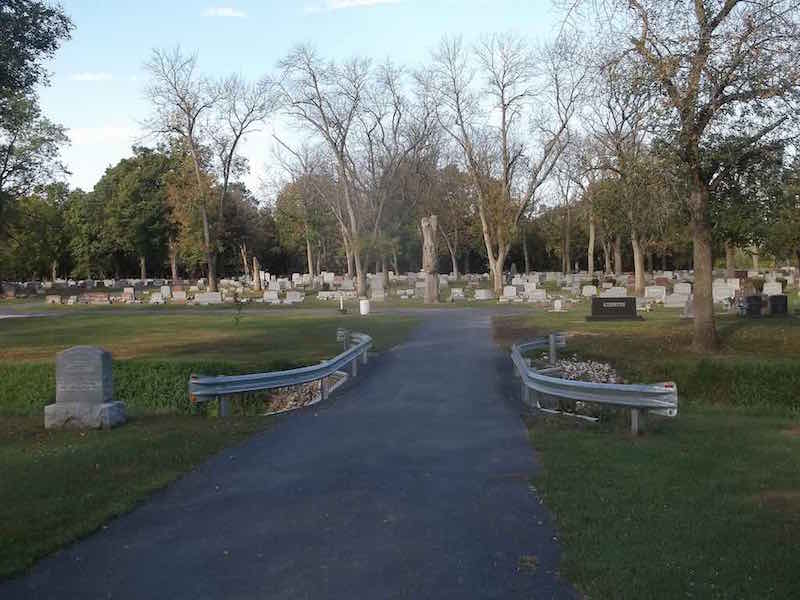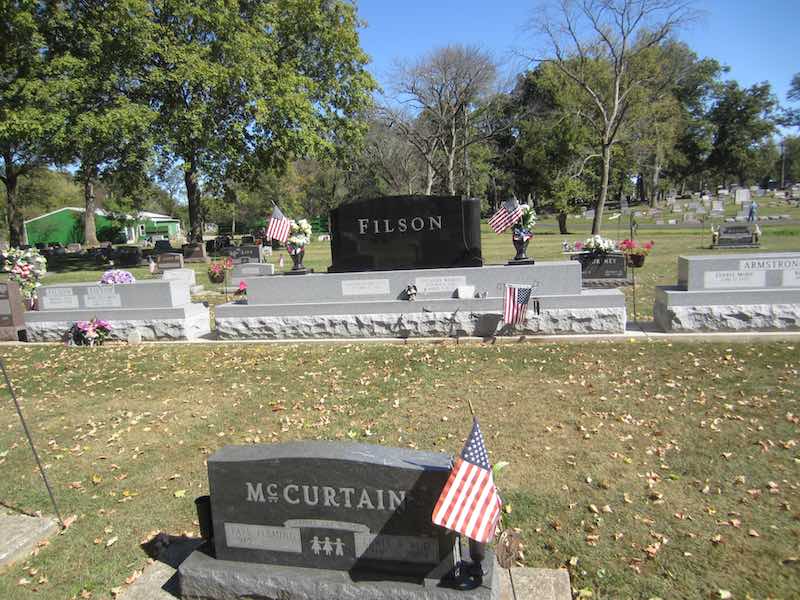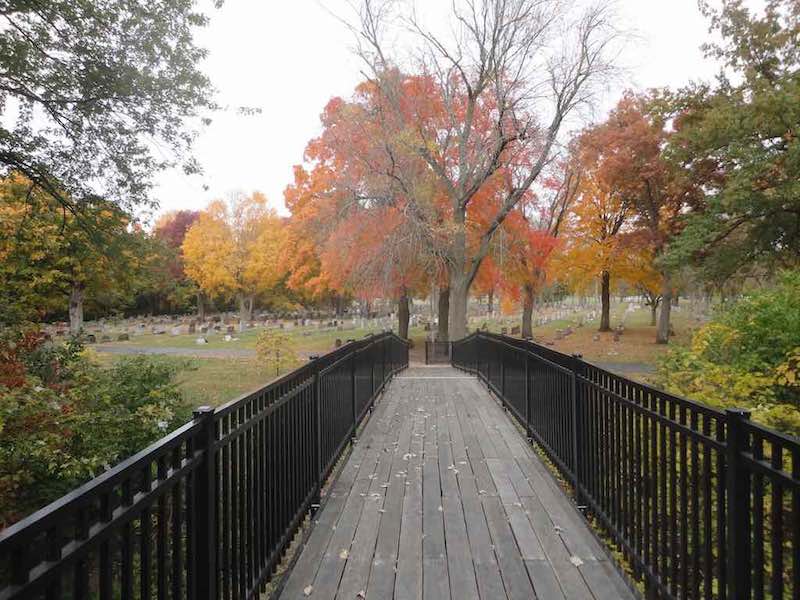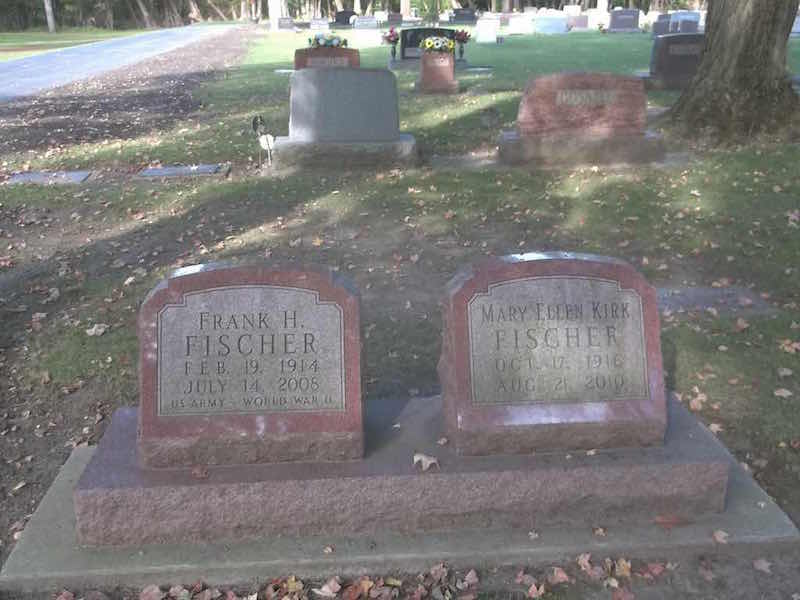A creek (actually a drainage ditch called the Maxwell Ditch) separates the oldest part of Weston Cemetery from a portion that was platted in 1913. This newer, western part was once shaded by many ash trees, all of which either have or almost certainly will fall victim to the emerald ash borer. When Rensselaer gets severe flooding, the bridge over the creek will be under several feet of water.

Before we cross the creek, we pass by two small sections, Sections H and I, with Section I straddling the creek. There is a big Davisson marker in Section I before the bridge. One of the persons buried here died in France during World War I. Lonnie Davisson is one of four people buried in Weston who were in the military during or shortly after WWI who died of disease.

Looking upstream as we cross the creek, we see the green metal building that serves as the Cemetery headquarters. For many years there was a house next to the road where the headquarters are and some past superintendents used it as a residence. It was torn down in 1992 and the site now has graves on it.
Except for a few graves in Section I, the graves between the creek and the road to the west make up Section J. Looking into Section J we cannot miss seeing the large Filson monuments, by far the largest monuments west of the creek. Ted Filson was an electrician who had the luck and insight to found a TV cable company. The company installed fiber optics cables so was positioned to provide fast Internet service when the Internet became a necessity in American life in the last decade of the twentieth and first decade of the twenty first centuries.

Except for the Filson monuments, there are no markers west of the creek that rival in size the many large markers in Sections D and G and markers tend to be more uniform in size than they are in the older sections.
After crossing the creek we head south. As we near the river, the road turns to the west and we come to the Bicentennial foot bridge that connects the cemetery to Bicentennial Park on the south bank of the river. This park has a shelter but no rest rooms and is built on the site of the old Rensselaer dump. The bridge was completed in 2011 and was built and donated by Talbert Manufacturing, which manufactures truck trailers east of town at Pleasant Ridge.

Near the approach to the bridge is the grave of Frank Fischer, an architect who designed a number of Rensselaer buildings, including Halleck Center at what used to be Saint Joseph's College.

- Introduction
- From the Entrance to Section A
- Sections B and C
- Sections D and U
- Section G
- Across The Creek to The Bridge
- Section P and Westward
- Sections M, L, K and the New Addition
Three other men who died in military service during or shortly after WWI are John Knox in Sec G Bl 40 Lot 2 Sp 3, George Gratner in Sec N Lot 55 Sp 1, and Dewey Biggs in Sec N Lot 34 Sp 6. The Rensselaer American Legion is named after Dewey Biggs, the first Rensselaer man to die in WWI.
Abraham Leopold's son Moses was a circuit court judge for 36 years. He is buried in the eastern part of Section M and his marker is visible as one crosses the creek and approaches where the road Ts. If instead of turning south on the road after crossing the river we had turned north, we would find the grave of General Alden Taber facing the road in Section I. He is one of two generals buried in Weston; the other is George Healey. Neither seems to come with interesting stories of their military service. As we walk to the foot bridge, we pass a cluster of Wright graves next to the road in Section N. These are descendants of Willis and Parker Wright in Section D. Willis Jennings Wright II took over the family businesses after Truitt Parker died and when WJ II died in 1929, his son WJ III assumed control. In 1941 he moved the funeral business to the corner of McKinley and Angelica and then sold it to the Jacksons in 1949. The furniture store expanded to all three floors of the building that was where Embers Station is now and may have been the largest furniture store between Chicago and Indianapolis. After it burned in 1948, WJ rebuilt on the corner of Grace and College. He sold the business in October, 1978 and it closed in the 1980s. If you have trouble finding the Fischer graves, they are next to the monument of the angel. The monument is on the grave of their sister-in-law.